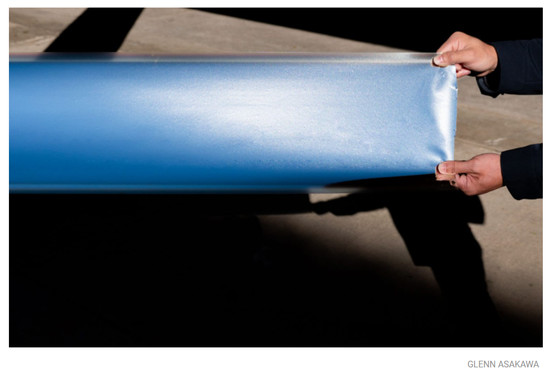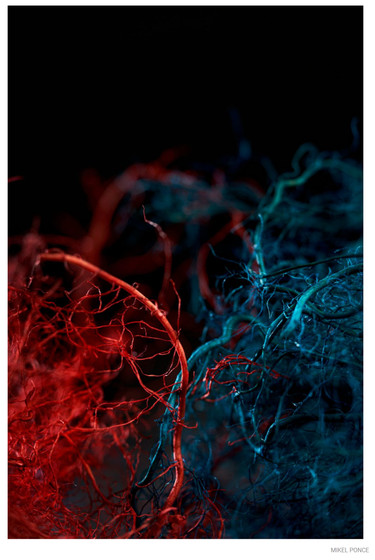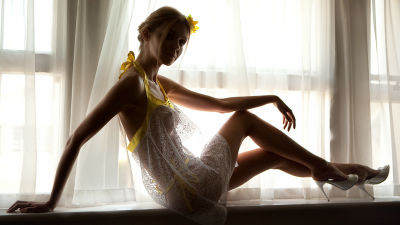What are the photo editors of scientific magazines doing to make photos look impressive?

When a researcher or writer publishes an article summarizing the research content in a scientific journal, we will prepare not only sentences but also photographs to make the content easy to understand and to interest non-expert readers. .. Emily Patterson, a photo editor in charge of photo for articles in the science magazine Science, reveals the concept of taking the photos used in science articles.
Mundane to memorable: transforming pictures | Visuals
The image below is a photograph of a subject in an 'experiment to determine the amount of sweat' conducted at the University of Wollongong , Australia. In introducing the experiment to Science, Patterson told the University of Wollongong media team, 'Keep the composition of the photo,' 'Soften the lights and add highlights,' and 'Dark and transparent the background.' I gave instructions such as 'make the capsule and wire stand out' and took a picture for publication in the magazine.

And the article '

The image below is a photo of a

Patterson asked Glenn Asakawa, a photographer at the University of Colorado at Boulder, to use it in the November 13, 2020 issue of Science's article, '

The cover of the December 4, 2020 issue of Science, which introduced a paper on plant root growth models, featured photographs of stained plant roots. Mr. Patterson, who supervised this photo, said that he thought of two concepts: 'expressing how the complex roots of a plant compete for space' and 'abstractly depicting the roots of a plant using a macro lens'. The image below is a photograph of the roots of a plant dyed by photographer Miquel Ponce.

And the following was taken based on Mr. Patterson's concept. Mr. Patterson only sent instructions, and it was Mr. Ponce who actually interpreted the instructions and photographed, 'By Mr. Ponce's creativity, the roots under our feet unfold'invisible' It drew readers' attention to the drama, and infused it against the backdrop of a swirling atmosphere of mystery and conspiracy, 'says Patterson.

'I work with photographers to effectively convey important parts of the image in order to make the research and new technologies covered in the article look interesting,' said Patterson. By eliminating the part that becomes, and making full use of the composition and light, the information that we want to convey in the end becomes clear. '
Related Posts:







